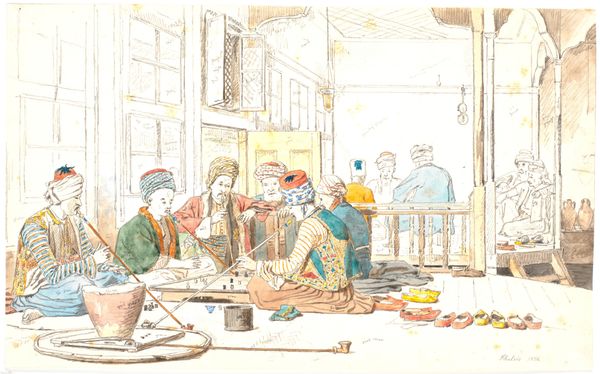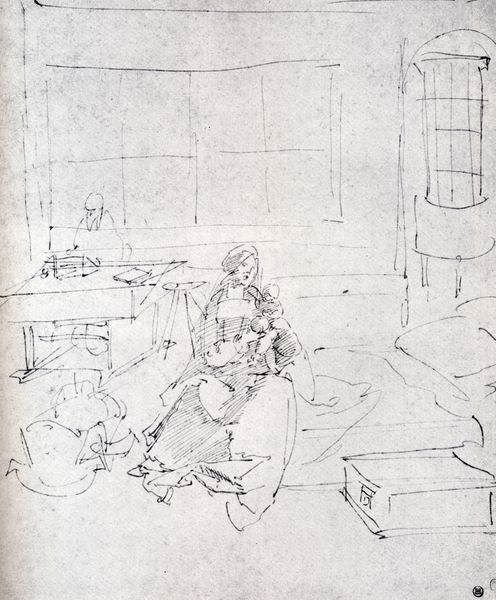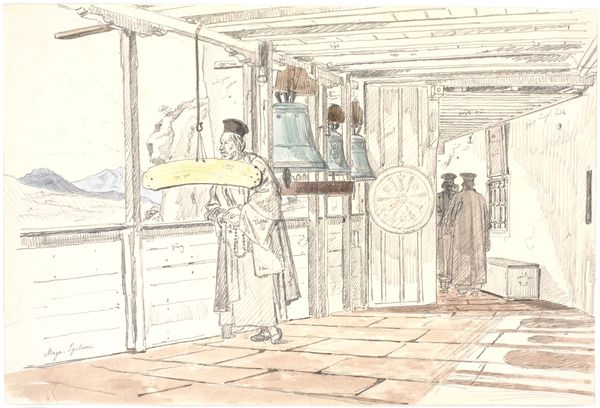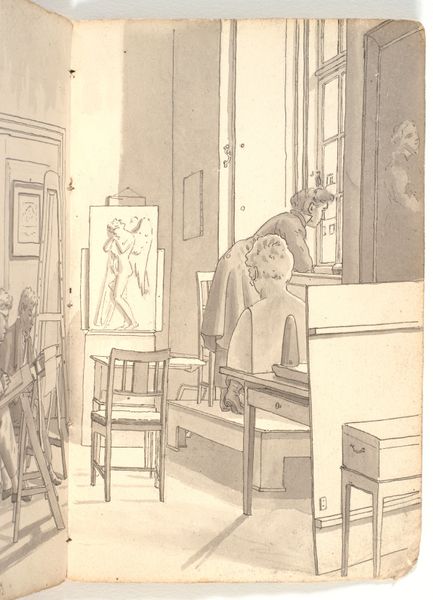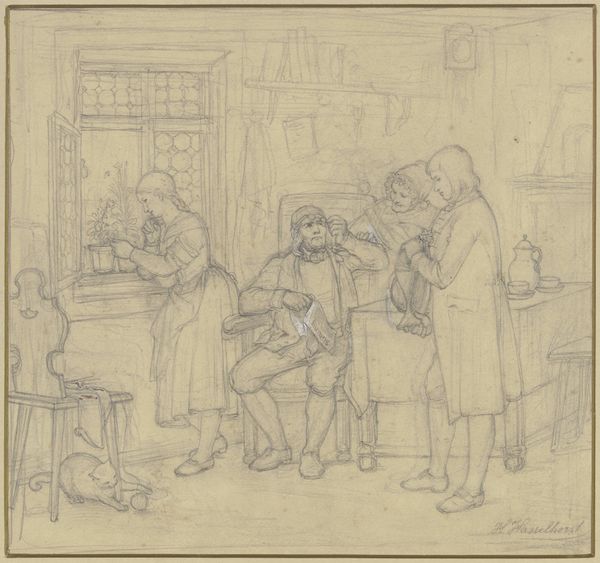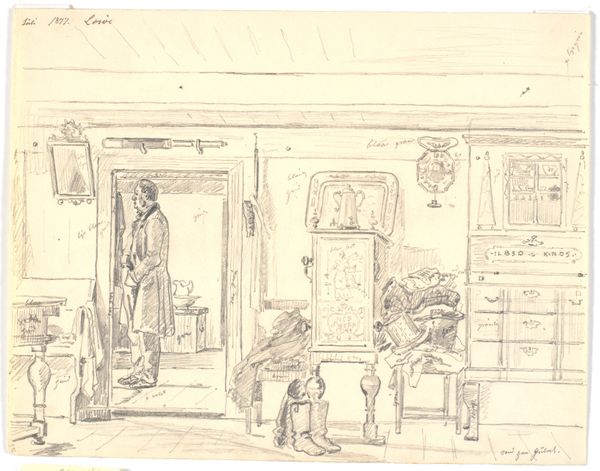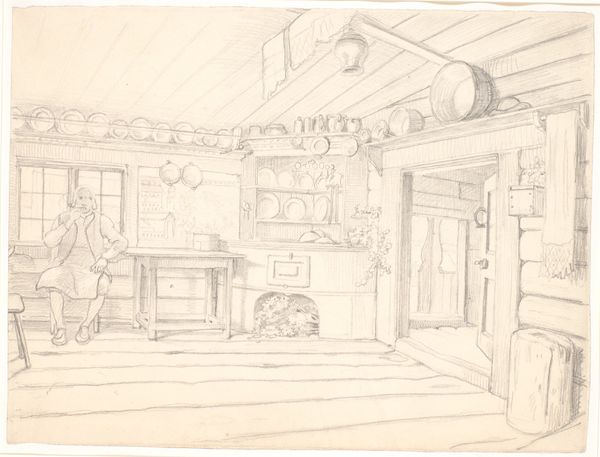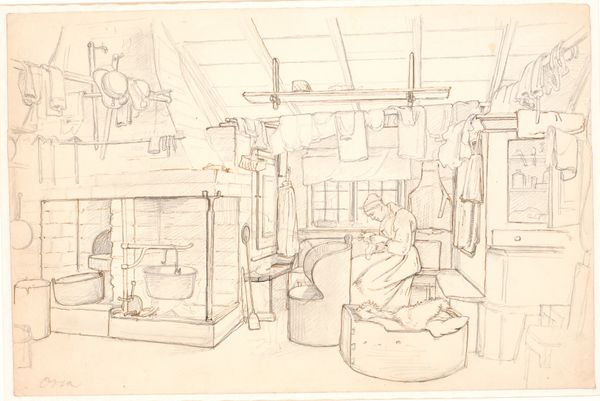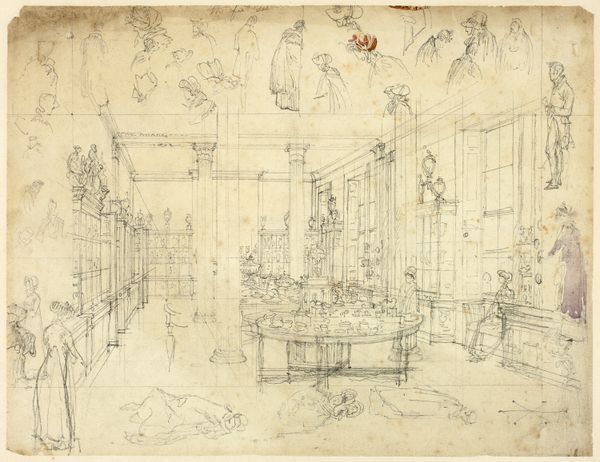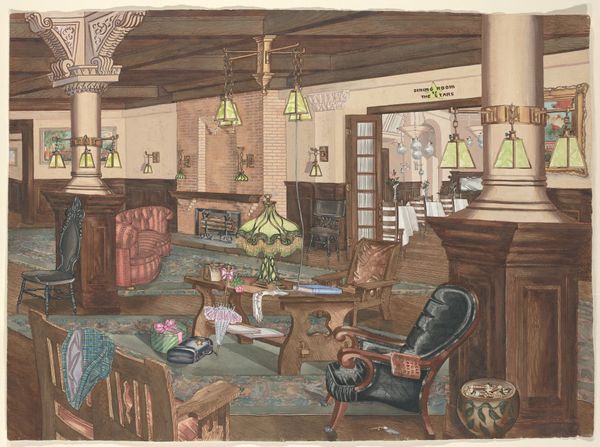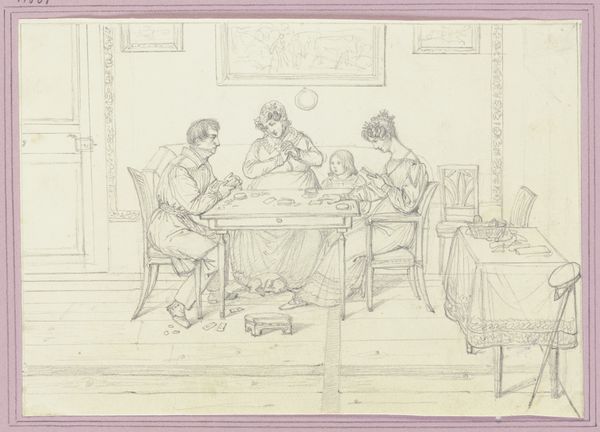
drawing, ink, pencil, pen
#
drawing
#
ink
#
romanticism
#
pencil
#
orientalism
#
architectural drawing
#
pen
#
genre-painting
Dimensions: 274 mm (height) x 434 mm (width) (bladmaal)
Curator: This ink, pen, and pencil drawing, made in 1836, is Martinus Rørbye's "The Interior of a Turkish Cafe." The artwork resides here at the SMK - Statens Museum for Kunst. What's your immediate take on this? Editor: A quiet intimacy. There’s a languid quality in the pose of the figures that I find quite striking, as if time moves differently within this space. Curator: Rørbye was part of the Danish Golden Age, yet his travels distinguish him. This drawing, categorized within Orientalism, speaks volumes about artistic exchange and representation during that era. What’s crucial here is understanding the labor and materials involved. Paper, ink, and pencil—relatively accessible, aiding portability. The very act of sketching emphasizes the artist’s presence and process of recording observations in situ, no? Editor: Exactly. We can't ignore the power dynamics inherent in Orientalist depictions. Who is granted the privilege to represent whom? How does Rørbye’s identity as a European artist shape the narrative? Considering his gender and social standing will help unlock different perspectives and understanding the work as situated within a specific socio-political context. Curator: Certainly. It seems Rørbye's careful rendering of textiles and architectural details invites us to consider the culture as seen through European eyes, while also reminding us of the materiality of artistic representation. Editor: It’s also important to examine the gaze involved. Who is this work for? Who gets to participate, or is made an object of curiosity? I find myself questioning if it perpetuates stereotypes, or if the rendering allows for genuine appreciation of another culture. The passivity of some figures could play into orientalist tropes. Curator: Perhaps. What's evident is the way Rørbye constructs this space, focusing our attention on the objects and how they shape the experience of those within the café. Even the seemingly mundane, like the textiles, or the serving paraphernalia hint at production practices. Editor: Indeed. And the positioning of the artist, capturing it from a remove as an outsider to these scenes – that is something that must be kept in mind as well. But that could be something valuable to observe within his art itself, if read with critical awareness of the history involved. Curator: Well, it certainly gives us pause to consider both artistic creation and the complex interplay of cultures. Editor: Precisely, allowing us to better understand these works in connection to societal context.
Comments
No comments
Be the first to comment and join the conversation on the ultimate creative platform.
